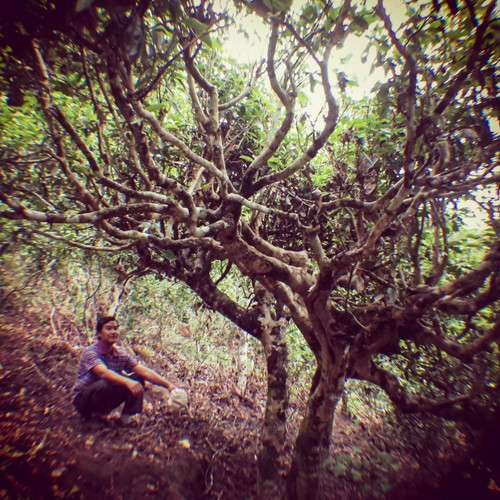The trait of purple leaves is a naturally-occurring, random mutation that is found in populations of tea plants all over the world. Research and analysis in the late 20th century found that this purple color denoted the presence of anthocyanins a class of purple and blue pigmented flavonoids. Anthocyanins are responsible for the color and “superfood” status of many purple and blue berries including blueberries, blackberries, and dark grapes. The appearance of purple anthocyanin pigmentation in tea plant is a rare mutation brought on by exposure to ultraviolet light at high altitudes. The discovery of the unique benefits of purple tea led to the emergence of a market for batches of pure purple Pu’er which became known as Zǐ Chá 紫茶 ("Purple Tea").
The relative scarcity of this purple tea and the time and labor-intensive process of consolidating only purple leaves makes it a high end, luxury tea. While the advent of Zǐ Juān 紫娟 (“Purple Grace”) has made purple tea more affordable in its cultivated form, Zǐ Yá Chá, 紫芽茶 ("Purple Bud Tea") remains highly sought after by connoisseurs for its distinctive character and powerful Qi.
This flight encompasses a complete snapshot of Purple Sheng Pu'er from Nannuo mountain.
Included in this flight:


